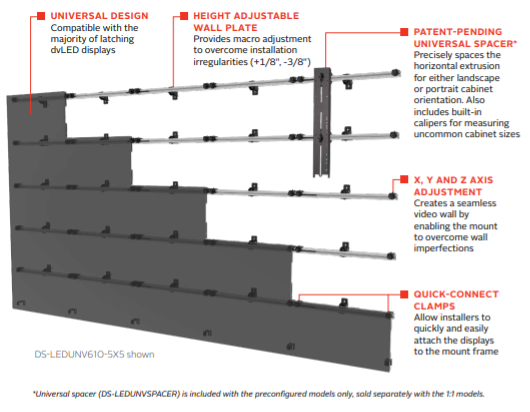 “Work, Life, Presence” a saying that will always be close to my heart and a reminder to myself every day. I was sitting at the Exertis Almo National Sales Meeting, and we had this amazing speaker, Kevin Carroll. He talked about his life, struggles growing up, and how far he had come into his career. “Work, Life, Balance” had a new meaning and it is now “Work, Life, PRESENCE.” It is not about balancing life, it is about being present, especially when you have a child with special needs.
“Work, Life, Presence” a saying that will always be close to my heart and a reminder to myself every day. I was sitting at the Exertis Almo National Sales Meeting, and we had this amazing speaker, Kevin Carroll. He talked about his life, struggles growing up, and how far he had come into his career. “Work, Life, Balance” had a new meaning and it is now “Work, Life, PRESENCE.” It is not about balancing life, it is about being present, especially when you have a child with special needs.
I am a mother of a child with a rare genetic disorder, called Syngap1. He is one of 1,400 patients in the whole world! In his 6 years of life, we have had so much thrown at us: Intellectual disability, epilepsy, autism, language delays, sleep problems, motor delays, hypotonia, sensory processing deficits, emotional and behavioral challenges. Oofta, that’s a lot and mouth full! How would we ever be able to help our child ever overcome so many obstacles, maintain a “normal” lifestyle and how would we continue our careers as both working parents?
Working and maintaining a career with a special needs child brings many incredible challenges. But we are not alone, many families struggle with the same obstacles we do every day. I took myself down a deep hole when we first received his “official” diagnosis at 3 years of age. I didn’t know how I was going to manage this “new” lifestyle, but then I decided to come up with strategies to manage our time, energy and emotions. Below are some helpful strategies to help you with the navigating the challenging, but also REWARDING role as a parent with special needs:
 1. Creating a Flexible Schedule
1. Creating a Flexible Schedule
- Flexibility: If work allows, try and find a way to work around your child’s needs. You may have to take breaks throughout the day for medical appointments or therapy. Flexibility in your work schedule can help you accomplish this.
- Hours: Know your limits and avoid overscheduling. Always communicate with your employer/supervisor/customers about your availability. Don’t be afraid to adjust when needed.
- Prioritizing: Make a list of your work and home responsibilities and prioritize what is most important. This will help you focus on what truly matters and help you manage your time more effectively.
2. Communication at work
- Transparency: always maintain open communication with your employer about your family situation so they can understand your needs and limitations. Let them know you are committed to your work, but there may be a time when family responsibilities will take priority.
- Arrangements: whether you work from home, adjust hours, or take time off for medical appointments, exploring flexible work options will help you become more present with your caregiving duties and help you manage your work.
3. Support
- Building a Network: Having a network of caregivers does not always just mean family, it’s about your friends, neighbors, colleagues, etc. Don’t ever hesitate to ask for help when it comes to your child’s needs.
- Connection: Share your experiences with others. You will find it extremely comforting being open – for many are going through similar situations or know someone that is. Consider joining support groups so that you can exchange advice with others and provide emotional support. You are never alone.
- Professional Help: Don’t ever hesitate to reach out for help when you’re managing your child’s care. Ask for assistance from their therapists, caregivers, special education teachers, paraprofessionals, etc. It can be worth investing in support services to help you manage all your responsibilities.
4. Technology
- Tools: Digital tools such as calendars, task management apps, etc. will help you stay organized. This may include scheduling doctors’ appointments, therapy, and important work meetings. Keep them all in one place so you can stay on track. Also, having a good web cam will go a long way and avoids many headaches when jumping on calls.
- Virtual: When possible, utilize telehealth services for doctor’s visits, therapy, or consultations. This will help reduce stress and amount of time traveling to help you stay on track.
5. Wins/Strengths!!
- Celebrate: Focus on small successes whether it’s at work or at home. Celebrating a new skill they have developed or a peaceful moment you shared. The littlest things can sometimes be the most rewarding!
- Accomplishments: Acknowledge the efforts that it takes to be present in both worlds. It sometimes may feel like you’re constantly juggling, just know you are doing an incredible job by meeting your family’s needs and working.
- Abilities: Focus on your child’s strengths and achievements. This will be a powerful reminder of how resilient your child is and how much you accomplish together.
- Engagement: Bond in ways with your child that cater to their abilities and can be rewarding for both of you.
6. Advocate
- Know Your Rights: When you’re navigating special education or healthcare, make sure you stay informed about your rights as a parent. Understanding these rights will help reduce stress by making accommodations at school and navigating healthcare services.
- Workplace Accommodations: If your child requires you to need flexibility in your work schedule (example: medical appointments during workday), investigate your companies’ policies on workplace accommodations.
It takes resilience, adaptability, and a strong support system to be able to manage work while caring for a child with special needs. Remember you don’t always have to do it alone or perfectly. Ask for help and rely on your support system when you need it. You are their parent for a reason, and you will do everything in your power to provide them with the best life they can have.
Remember, it is “Work, Life, PRESENCE.”




 “Work, Life, Presence” a saying that will always be close to my heart and a reminder to myself every day. I was sitting at the
“Work, Life, Presence” a saying that will always be close to my heart and a reminder to myself every day. I was sitting at the  1. Creating a Flexible Schedule
1. Creating a Flexible Schedule








